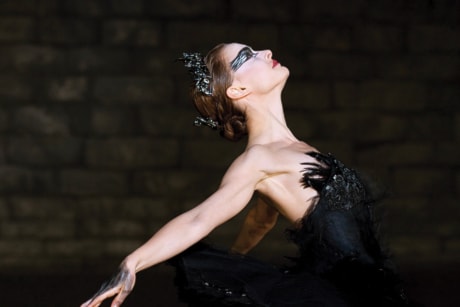Black Swan
Three and a half stars out of four
Rated: 14A
Black Swan is ballet as gladiator contest, where the most vicious antagonists are the warring halves of a dancer’s mind.
Her descent into near madness in Darren Aronofsky’s bold film seems so real, you actually fear for the sanity of Natalie Portman, whose portrayal is the year’s best female performance at the movies.
This is Portman’s bid for Best Actress, and it thrills to watch her go for it.
She’s so convincingly fragile as crystalline ballerina Nina, that viewers may initially be tempted to agree with characters in the film who doubt her transformative ability.
Nina is virginal in mind if not body. She wraps herself in pink, sleeps with stuffed animals and meekly heeds her mommy dearest (Barbara Hershey).
Fearful of the world, Nina’s face resembles the haunted visages of a Roman Polanski or Michael Haneke film.
Is there any wonder her mother, her artistic director Thomas (Vincent Cassel) and rival dancers all question her aptitude for the tricky dual role of Odette/Odile in Tchaikovsky’s Swan Lake, the new season’s choice for her New York ballet company?
The role, which Nina desperately wants, requires her to leap from white swan Odette to black swan Odile in the magical wooing of Prince Siegfried.
Thomas knows Nina has the talent and grace of sweet Odette. But can she summon the “visceral and real” (read: sexual) emotions to convincingly play evil Odile?
She provides it anyway, but not before Nina has been pushed to the brink of insanity.
Could her nightmares be real? The classical waltz music on Clint Mansell’s soundtrack, inspired by Tchaikovsky’s original, frequently turns strident in the manner of horror movies, as do the visuals.
Aronofsky and cinematographer Matthew Libatique view ballet as one would the bloody ancient rites of Rome’s Colosseum. Their camera seizes upon bruised feet, battered bodies and wounded expressions. But they also show flashes of the release that dancing provides, moments when pain, gravity and doubt no longer apply.
Ballerinas must learn to dance upon the broken and discarded bodies of those who came before them. That includes Beth, a prima ballerina on the downslide whom Thomas replaces with Nina.
How cruel is the sting of stage and screen! But Beth will not go quietly.
Someone else wants to trample upon Nina.
Hot and hateful Lily alternately befriends and betrays the fledgling star, as she seeks to take the Odette/Odile roles for herself.
If there’s a flaw in Black Swan, it’s the absolute focus on Portman. It prevents us from plumbing the depths of the other characters, a failing that most affects Cassel’s Thomas. He’s entertaining as the roué that Cassel can play so well, but he’s not sinister enough to be a true antagonist to Nina.
But then few actors could hope to stand next to Portman in this movie and come out the better for it. Her performance is the reason why you must see Black Swan. She’s on fire, consuming everything around her.
Peter Howell is a syndicated Toronto Star movie critic.
